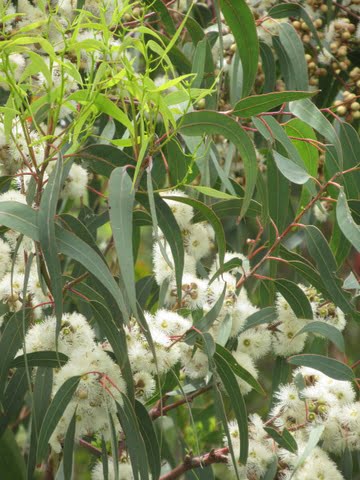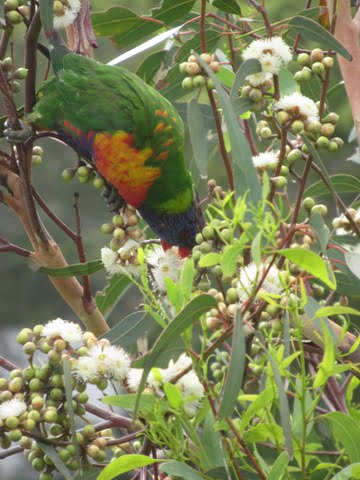The ancient connection between Eucalypts and Koalas
By Carmel Northwood, Convenor Koala Koalition.
Eucalypts are extraordinarily ancient – over 100 million years ago these flowering trees existed with the dinosaurs. Koalas are surprisingly ancient too – around 40 million years ago their evolution split from wombats that remain their closest living relative, although they are marsupials as so many of our Australian wildlife. The local Worimi (gathang language) word being ‘Goola’.
When the lightly furred upper bodies reach out of the mother’s pouch at around 6 months of age, the joey koalas begin to wean from their mother’s milk to eat leaves. Their mother firstly provides ‘pap’ for the joey to eat. This transfer of partially digested matter from her caecum provides the gut flora (bacteria) the joey needs to digest the species of trees in their local area. This makes koalas incredibly specialised eaters and explains why koalas cannot be simply moved from one place to another – if the trees are too different, their digestive system cannot cope and they starve.
In our LGA, the species of trees important to koalas are explained in the document ‘ Locally Important Koala Trees in Port Stephens’ produced by KKEPS in June 2023 – you can read it here. Some trees are preferred food species and many more are used for shelter. Around Anna Bay and Salamander, the wetlands are surrounded by local koala favourites especially Eucalyptus robusta (swamp mahogany) and Melaleuca quinquenervia (broad-leaved paperbark).


Other favourites are Eucalyptus tereticornis (forest red gum) growing in higher ground around Soldiers Point with distinctly smooth silver bark and the crushed leaves smell strongly of eucalyptus oil) and also the Eucalyptus parramattensis – the subspecies decadens is threatened – but all species have lovely large flower buds that are shaped like rugby balls so its koala carer nickname is Parra. It is a rather slow growing smaller eucalypt that may be suitable for gardens.
Koalas will eat other species of eucalypts, corymbia and angophora, especially as they cross the landscape to find breeding partners and when they must find new home territories. Both young and old are forced out of the best habitat by the strongest alpha males and females. They particularly enjoy the new growth and the buds and newly-opened flowers that usually provide enough moisture so that they don’t need to drink water. They can leap up to 2m from one tree to another to avoid dense groundcover and predators.
Sadly, disappearing corridors bring koalas into much more danger from cars, dogs and they end up in unlikely and unsuitable places. This may force their rescue and relocation with a great deal of consideration under the 2023 Code of Practice for Injured Sick and Orphaned Koalas | NSW Environment and Heritage.
Useful Links:
Locally Important Koala Trees in Port Stephens – KKEPS June 2023
Koala Koalition EcoNetwork Port Stephens (KKEPS) – Home Page
Code of Practice for Injured Sick and Orphaned Koalas – NSW Environment and Heritage 2023
Eucalyptus parramattensis subspecies decadens – Threatened Species
Pap not poop: The ‘gift’ a mother koala gives her joey – Australian Geographic
